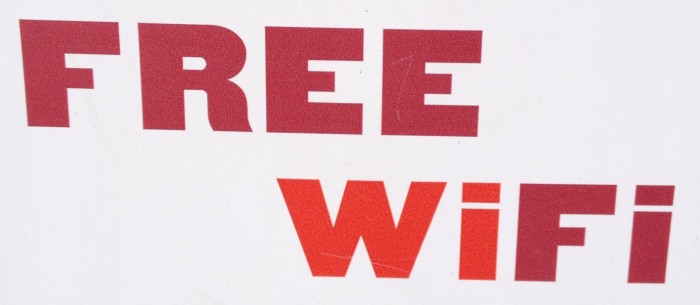
Me: “Excuse me, is your wifi working?”
Waitress: “It should be. It’s always on.”
Me: “Well, your network isn’t showing up on my phone.”
Waitress: “Oh, well, it’s way over there so it never reaches over here.”
The sign proudly and prominently displayed on the door of the well-known national chain restaurant said “Free Wifi.”
What it should’ve said was “Free Wifi (unless you’re sitting in the half of the dining room it doesn’t reach)”
The waitress wasn’t surprised. She didn’t spring into action to find a solution. It had become common knowledge among the employees that their wifi sucked like a Hoover.
Now, I’m not proposing that every business should offer free wifi (although it’s probably not a bad idea).
I’m simply suggesting that you should deliver what you promise.
Either pay to jack up the wifi signal so that your patrons can enjoy it or don’t offer free wifi. Period.
A wise man once said, “If I’m saying one thing…and we’re doing another…well, I’m a liar.”
Guess what? If your sign says “Free Wifi” but I can’t access it at my table, you lied to me.
Oh, and thanks to social media, you lied to all of my friends, too.
Are you lying to your customers?

Nice article, and sadly it happens far to often. And, as you suggest, not just the customer, but potentially their entire social network now knows it. And that’s not really the kind of stuff you want to go viral, right?
But here’s an another thought: what are you teaching your employees in this situation?
Some suggestions:
It’s no big deal if customers are aggravated, AND no big deal if you’re the reason for the aggravation.
It’s OK to lie… so, then, it’s also OK for them to lie to you? And as we know lying is a close relative to cheating and stealing. So, is that also OK?
And then we wonder why our employees say and do the things they say and do. And we don’t understand why they are so unengaged.
Unfortunately this is just another small example of the fact that we still live in a world full of ‘do as I say not as I do’. No it’s not about getting everything right all of the time. No one can do that. None of us are prefect. That’s not what this is about. But it is about leading by –positive- example, showing you care when your employees tell you something, so that when a customer tells them something, they care also, and because they know you care, they fix it or tell someone who can.
When that happens, the conversation in this article changes completely. One possibility:
Me: “Excuse me, is your wifi working?”
Waitress: “Yes sir, it should be. It is always on. Are you having a problem with it?”
Me: “Well, your network isn’t showing up on my phone.”
Waitress: “Really, that’s odd, I’ll look into right away, I’ll be back in just a minute.”
Now even if the waitress isn’t able to quickly get the wifi up and running, what was the customer’s experience?
And what was the total investment that was required to make this positive scenario happen? Lead –positively- by example and show you care: $ 0.00.
Isn’t that an investment we can all afford?
I had just the opposite situation. I was sitting in a coffee shop that had WiFi but not for the public. I wanted to show some online pictures to my friend during lunch. When I asked the waitress for the password, she said they don’t offer it to the public. I am OK with that. It is their choice. But this was near lunch time and they had over 40 tables. We were the only people sitting down in the place-I wonder if having no WiFi had anything to do with it? Maybe I’m cheap and have come to expect things I should not take for granted, but I won’t be going there again as there are many places within a mile that offer free WiFi.
Unlike Steve Sorenson who commented above, my priorities are MUCH different. When I’m considering where to have lunch, my priorities are quality of the food, prompt and friendly service, and total value received.